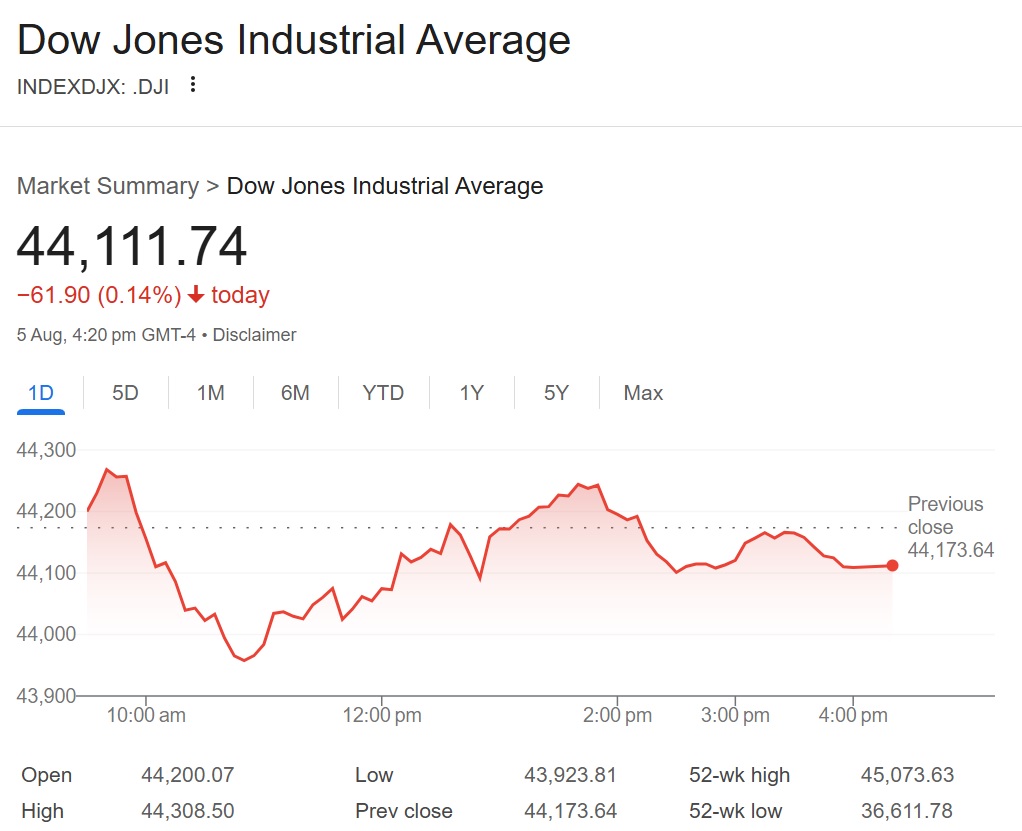Dow Jones slips 62 points as services data and tariff talk rattle investor confidence

U.S. stocks retreated Tuesday as investors weighed weaker-than-expected economic data and fresh tariff remarks from President Donald Trump, raising concerns about the health of the economy.
The S&P 500 fell 0.49% to close at 6,299.19, while the Nasdaq Composite dropped 0.65% to 20,916.55. The Dow Jones Industrial Average edged down 61.90 points, or 0.14%, ending the session at 44,111.74.
Markets have been volatile in recent days. On Friday, the Dow plunged more than 500 points after the latest jobs report signaled prolonged weakness in the labor market. It rebounded Monday with a nearly 600-point surge, only to reverse course again Tuesday.
The downturn followed a flat reading in the ISM Services index for July, amplifying fears of stagflation—a scenario marked by rising inflation and declining employment. With services accounting for roughly 70% of the U.S. economy, the stagnation in the sector could signal broader trouble ahead.
Adding to investor unease, Trump told CNBC that new tariffs targeting semiconductors and pharmaceuticals would be announced “within the next week or so.”
“We’re going to be announcing on semiconductors and chips, which is a separate category, because we want them made in the United States,” Trump said.
Despite the broader pullback, Palantir shares surged 7.9% after the defense tech firm reported revenue exceeding $1 billion for the first time. In contrast, Caterpillar posted an earnings miss and ended the day flat, while Eaton fell 7% following weak guidance.
“Today we’re seeing the market pull back a little bit, [but] equities have been on a nice run,” said Terry Sandven, chief equity strategist at U.S. Bank Asset Management. “We’re probably due for a period of consolidation, some backing and filling, so to speak.”
Sandven noted that while valuations remain elevated, “inflation is benign, interest rates are in the cusp of going lower and earnings are trending higher,” suggesting a “favorable backdrop for a risk-on bias.”